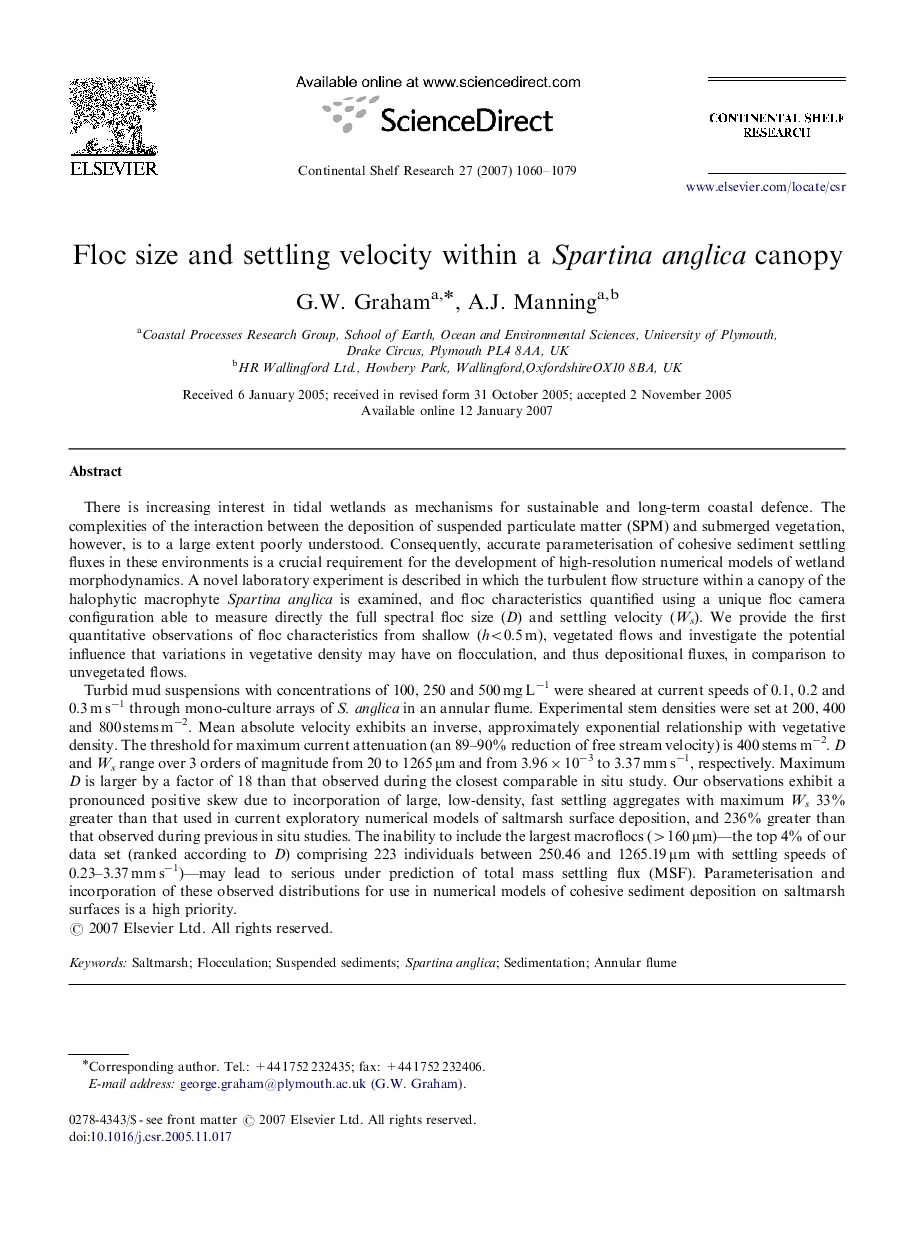| Article ID | Journal | Published Year | Pages | File Type |
|---|---|---|---|---|
| 4533498 | Continental Shelf Research | 2007 | 20 Pages |
There is increasing interest in tidal wetlands as mechanisms for sustainable and long-term coastal defence. The complexities of the interaction between the deposition of suspended particulate matter (SPM) and submerged vegetation, however, is to a large extent poorly understood. Consequently, accurate parameterisation of cohesive sediment settling fluxes in these environments is a crucial requirement for the development of high-resolution numerical models of wetland morphodynamics. A novel laboratory experiment is described in which the turbulent flow structure within a canopy of the halophytic macrophyte Spartina anglica is examined, and floc characteristics quantified using a unique floc camera configuration able to measure directly the full spectral floc size (D) and settling velocity (Ws). We provide the first quantitative observations of floc characteristics from shallow (h<0.5 m), vegetated flows and investigate the potential influence that variations in vegetative density may have on flocculation, and thus depositional fluxes, in comparison to unvegetated flows.Turbid mud suspensions with concentrations of 100, 250 and 500 mg L−1 were sheared at current speeds of 0.1, 0.2 and 0.3 m s−1 through mono-culture arrays of S. anglica in an annular flume. Experimental stem densities were set at 200, 400 and 800 stems m−2. Mean absolute velocity exhibits an inverse, approximately exponential relationship with vegetative density. The threshold for maximum current attenuation (an 89–90% reduction of free stream velocity) is 400 stems m−2. D and Ws range over 3 orders of magnitude from 20 to 1265 μm and from 3.96×10−3 to 3.37 mm s−1, respectively. Maximum D is larger by a factor of 18 than that observed during the closest comparable in situ study. Our observations exhibit a pronounced positive skew due to incorporation of large, low-density, fast settling aggregates with maximum Ws 33% greater than that used in current exploratory numerical models of saltmarsh surface deposition, and 236% greater than that observed during previous in situ studies. The inability to include the largest macroflocs (>160 μm)—the top 4% of our data set (ranked according to D) comprising 223 individuals between 250.46 and 1265.19 μm with settling speeds of 0.23–3.37 mm s−1)—may lead to serious under prediction of total mass settling flux (MSF). Parameterisation and incorporation of these observed distributions for use in numerical models of cohesive sediment deposition on saltmarsh surfaces is a high priority.
